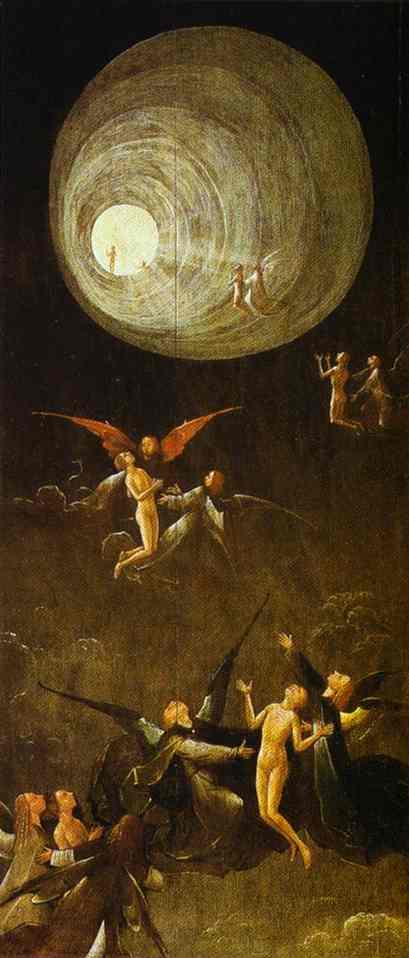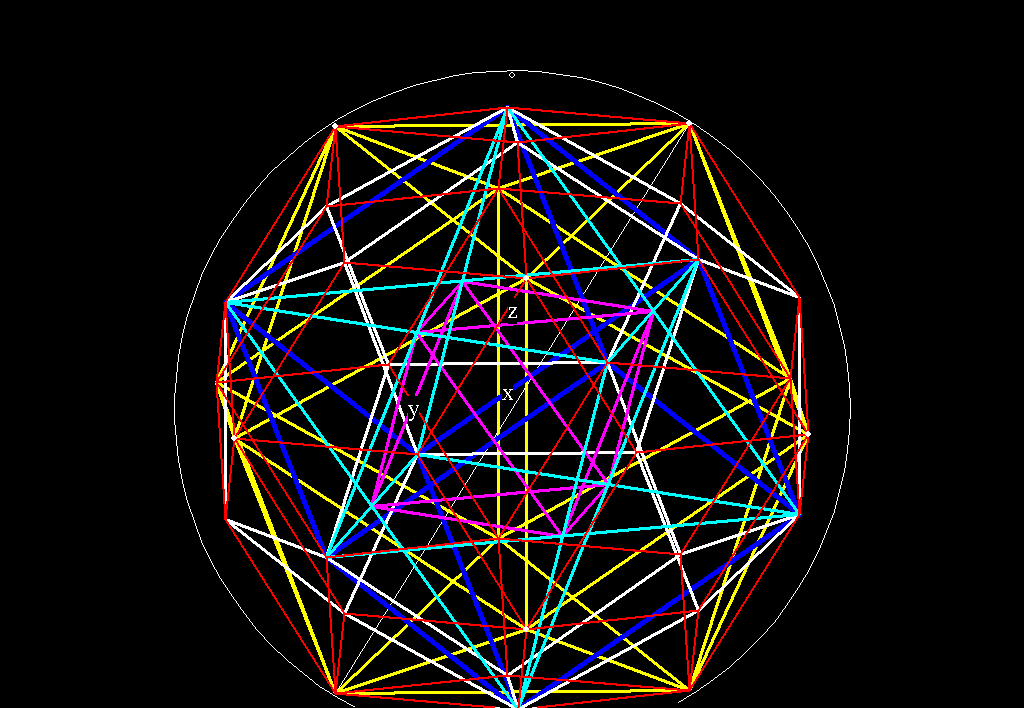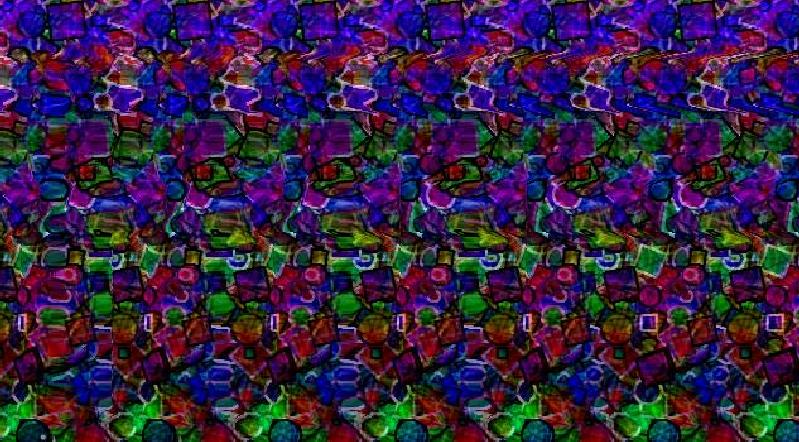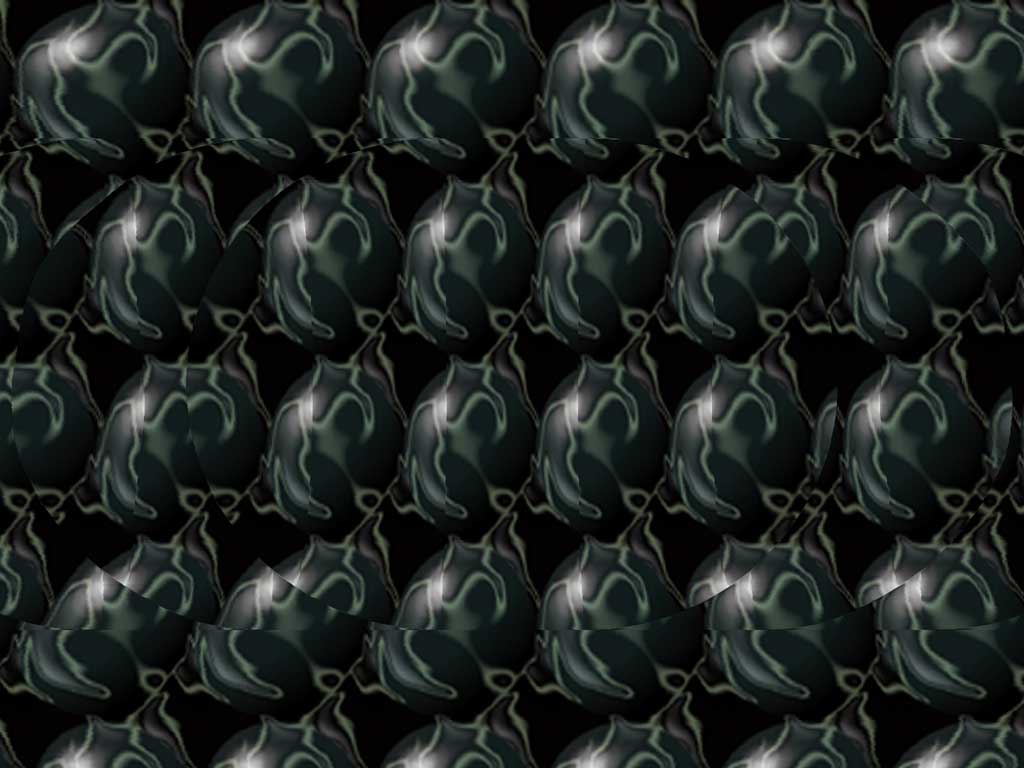

Theurgy constitutes a special type of Dialectical Interchange between terrestrial mortals and supersensible Higher Beings. In all forms of Perennialist Dialectic, prepared participants enter into shared mystical experiences in which they gain union with Higher Forces, participate in their Work, and gain understanding of Transcendent processes, ideas and Forms.
"It is through communicating with higher spiritual beings by means of Theurgical Dialectic that humans come to true realization of what they are in essence: eternal spiritual entities."
Iamblicus, On the Mysteries
Theurgy works toward sustasis, which means standing together, hence an interchange with the Divine. Iamblicus, one of the foremost Neo-Platonists who worked with theurgy, considered the outcome of theurgical dialectic to be henôsis, a creative partnership with the Divine, sharing in the Transcendent activity of maintaining and developing the cosmic order. Theurgical dialectic eventuates in illumination and temporary ascent of the soul into Higher Realms.
Theurgy consists of ritualized, performatory 1 procedures bringing about the transmutation of the Soul and persons' progressive realization of their abiding in and acting in the supersensible eternal domain. The initiate, through performing these ceremonies, 2 achieves ascent from the conditions of worldly existence and realization of unity with the Divine One. We study theurgical dialectic to gain a practical understanding of its essence to achieve self-transmutation and union with the One.
Theurgy: from the Greek theourgia meaning "divine" and "work," thus a "divinely oriented operation;" a ritual activity that unites the soul with the Divine, the soul changing its perceived ontological status from that of mortal to immortal; a rite through which the embodied soul ascends to a point at which it becomes capable of engaging in a meaningful dialogue with spiritual beings, experiencing interchange instead of merely conceptualizing spiritual entities (persons, ideas, Forms, realms)
"The practice of ritualistic theurgy is the medium by which the fallen soul ascends to a point at which it becomes capable of engaging in a meaningful dialectic with the divinity." Edward Moore, "Neoplatonism," Internet Encyclopedia of Philosophy
In this essay, we distinguish between customary dialectic and theurgical dialectic.
Customary Dialectic Theurgical Dialectic Customary dialectic involves participants engaging in verbal or meditational interchange to gain genuine understanding of "that which has true being"--Eternal Forms. Customary dialectic involves spontaneity and impromptu "flying by the seat of one's pants." Theurgical dialectic is a more formal, ritualized, evocative, devotional phenomenon. Some of the elements of theurgical dialectic are disclosed in theurgy itself. Customary dialectic discloses words, images, prayers, and music that can then be used effectively in theurgical dialectic rites and ceremonies.
From a careful study of Plato's writings it's clear that he participated in and recommended both customary dialectic and theurgical dialectic. In his book The Theology of Plato, Proclus points out that Plato practiced and enjoined both types:"After the all-perfect comprehension of the first theory, we must deliver the modes according to which Plato teaches us mystic conceptions of divine natures. For he appears not to have pursued everywhere the same mode of doctrine about these; but sometimes according to a deific energy, and at other times dialectically, he evolves the truth concerning them. And sometimes he symbolically announces their ineffable peculiarities, but at other times recurs to them from images, and discovers in them the primary causes of wholes."Plato emphasized diverse themes of dialectical ascent:
Diverse Themes of Ascent to The One Attributes of The One
Beauty
Wisdom (Sophia)
Connecting Property
Love (Erôs)
Truth (Alêtheia)
Understanding
Vehicle of Ascent
Customary Dialectic
Customary Dialectic
Theurgical Dialectic
Path of:
Aphrodite
ErosAthena
HermesHekate
HeliosStages of Ascent:
- empyrean
- aetherial
- materialDesire for:
- spirit
- soul
- bodyContemplation of:
- intuition
- reason
- senseOperation by:
- unitive rite
- mental rite
- material rite
This essay constitutes both a conceptual and an experiential exposition of theurgical dialectic: a philosophic exploration of the relevant concepts and an actual theurgical dialectical interchange in which the reader participates as an initiate in the words, images, and exercises presented.
| That discernible spiritual effects were realized through historical theurgical operations called Mysteries we have such witnesses as Hermes, Socrates, Plato, Aristotle, Aeschylus, Euripides, and other major thinkers in the ancient world. In this essay, we'll:
|
The Corruption of TheurgyAs with all terrestrial phenomena, in some instances theurgy has been corrupted by scholastics and imposters into an occult racket that the gullible are made to believe is the use of supernatural powers to influence spirits or predict events. As such, theurgy becomes synonymous with counterfeit instances of conjuration, magic, shamanism, sorcery, sortilege, thaumaturgy, witchcraft, or wizardry.
In examining the essence of theurgy we discover that this type of operation has been misinterpreted, degraded, and corrupted in such phenomena as witchcraft hexes and orthodox Christian sacraments. 3
Christian sacraments are held by the Roman Catholic Church to produce grace in the soul of the recipient by the very performance of the sacramental act (ex opere operato); the recipient need only have the right intention. Protestants hold generally that it is the faith of the participant, itself a gift of God, rather than the power of the sacramental act that produces grace.
The official Roman Catholic explanation of the change taking place in the eucharist, called transubstantiation, is that the substances of bread and wine are miraculously turned into the substance of Christ himself, the elements changed retaining only the appearance, taste, etc.(the accidents) of bread and wine. Catholic doctrine holds that the Godhead is indivisible so every particle or drop thus changed is wholly identical in substance with the divinity, body, and blood of the Crucified Savior.
As you began reading this essay, you may have been somewhat disconcerted with how theurgy was defined: a ritual ceremony that unites the soul with the Divine. If you find it difficult to credit that a ritualized procedure could actually lead to the soul changing its perceived 4 ontological status from that of mortal to immortal--consider carefully the spurious Roman Catholic claim that a priest, of whatever moral character (possibly a pedophile), can magically transform ordinary wine and wafers into the literal blood and body of Jesus Christ--irrespective of the spiritual state of the communicant.
The counterfeit claims of the Roman Catholic Church--and other phony cults--make people dubious about the authenticity of any spiritual procedure. So it's doubly hard to conceive of there being genuine transcendent rites--because there are so many religious swindles that discourage belief.
Distinguishing Between Theurgical Dialectic and Spiritual Meditation
Participants who succeed in theurgical dialectic, as in all forms of Platonic dialectic, enter into a shared mystical state. Dialectic involves moving beyond ordinary mental and intellectual thought to a higher state of consciousness. Theurgical Dialectic goes beyond spiritual meditation to actual interchange with Higher Beings, as Iamblicus makes clear.
Unless participants in theurgical dialectic have worked to attain requisite higher moral, intellectual, and spiritual capabilities, they're incapable of understanding what dialectic or theurgy actually means and involves and thus are incapable of comprehending transcendent spiritual states even if they were to participate in dialectical interchange with a person experiencing these states.
"It is not thought that links the theurgist to Higher spiritual beings: else what should hinder the theoretical philosopher from enjoying theurgic union with them? The case is not so. Theurgic union is attained only by the perfective operation of ineffable rites correctly performed, rites which are beyond all ordinary understanding and by the power of unutterable symbols which are intelligible to Divinity." Iamblicus, On the Mysteries
The Spiritual State Requisite for Participation in Theurgical Dialectic
Contrary to the Roman Catholic dogma that the priest's and the supplicant's moral status are irrelevant to the religious rite, genuine theurgy requires that the hierophant and the initiate have achieved an exalted moral status.
Initiators of theurgic dialectic must thenselves have experienced rebirth into the state of unity with the Divine. A high moral sensibility is required both to enable teachers to discern (see and understand) Higher Realities, but also to have been admitted into theurgic rites where they experienced (and continue to exprience) transmutation.
Theurgical dialectic takes one of its cues from Plato's statement in his Theatetus (176b.1-2): "A man should make all haste to attain unity with God. We escape by becoming as like God as possible. We attain unity with God by becoming holy, just, and wise."
The purpose of theurgical dialectic, then, is not to propitiate spiritual beings and ask them to carry out desired operations, but rather through supernal rites to purify and transform one's soul so that it may affiliate with spiritual beings in an effective manner. By means of theurgical rites the participant breathes in Divine illuminating energy and incorporates Divinity into her own being.
"From the very outset, then, we are to regard prayer, with which we include the proper use of invocations, ceremonial and ritual where necessary, as not the least important part of the sacred rites, both purificatory and telestic. And the Alchemists tell us, no less than the Hierophants of the Mysteries, the Prophets of the Old Testament and the Apostles of the New, that without it nothing may be accomplished. . . While Zachary, in the Opusculum, is equally definite. 'For no one,' he says, 'ever acquired this art by chance, but by prayer rather than by any other means.'"
E. J. Langford Garstin, Theurgy or the Hermetic Practice, 1930
Prayer As a Thurgic Rite
As Garstin indicates, prayer is an integral part of theurgy, an initiatory (telestic) and mystical rite: a formalized act that, when performed correctly and efficaciously, transforms a person from one ontological state (e.g. terrestrial) to a higher ontological state. All mystical or genuinely spiritual teaching speaks of the efficacy and necessity of prayer in achieving a higher state of being (awareness of oneness with the One).
"Every man knows that hath entirely devoted himself to this business, how effectual prayer is, and how often those things which he long sought and could not find, have been imparted to him in a moment, as it were, infused from above or dictated by some good genius. That is also of use in solving riddles and enigmatical writings; for if you burn with a great desire of knowing them,that is prayer: and when you incline your mind to this or that, variously discussing and meditating many things, this is co-operation . . . yet all endeavour is vain until you find a solution. Nevertheless, if you despair not, but instantly persist in desire, and cease not from labour, at length, in a moment, the solution will fall in; this is revelation, which you cannot receive unless you pray with great desire and labour, using your utmost endeavour; and yet you cannot perceive how from all those things of which you thought, which were not the solution of the enigma, the solution itself arose. This unfolding of the Riddle opens to you the mystery of all things, and shows how available prayer is for the obtainment of things spiritual and eternal as well as corporeal and perishing good: and when prayer is made with a heart not feigned, but sincere, you will see that there is nothing more fit for the acquiring of what you desire."
Basil Valentine, The Triumphal Chariot of Antimony, 1678
As with all genuine theurgical acts, prayer does not involve an attempt to influence or coerce a higher being for egoistic purposes.
"But prayer must not be considered, in the invocations of the mysteries, or in one's private meditations, as being used with any deluded notion of influencing the Gods and changing their minds, as if they were vacillating entities like ourselves, subject to flattery and capable of being swayed by a petition adroitly addressed. Nor should anyone suppose thatPrayer is a necessity in all three of the stages toward transcendence as outlined by Plato: Purification, Initiation, Direct Vision.the purpose of the Rituals and Formulæ is to force the Gods to this or that manifestation of their powers, as if man should set himself up to be higher than they, for indeed it is far otherwise." 5
". . . These rites, ceremonies and exercises, were in the first stages directed to a purging and purification of the lower nature, uniting it thereafter to its various higher counterparts until, having gathered itself together, as it were, having achieved a state of unification of itself, it might attempt the supreme and final operation of at-one-ment or commingling, uniting itself indissolubly with that which is beyond all idea of selfhood." 6
Chaldean Oracle
Those who by breathing pry loose and separate the soul from the body are set free.
Drawing in the flowering flames that descend from the Father,from these flames as they descend, the soul plucks the soul-nourishing flower of fiery fruits.
Mithras LiturgyDraw in breath from the rays, drawing in as much as you can, and you will perceive that you have been lifted up and are ascending to the height.
By inhaling the fiery light, the theurgist ascends because she literally merges with Divinity. Just as there must be light before a corporeal eye can see an object in the material world, so does the presence of divine light enable the "imaginative eye" -- the "perceptive organ" within the soul -- to see objects that exist in the divine world and to conjoin with them.
"It is the life that is lived in accordance with Higher Intellect and that cleaves to spiritual beings that we must train ourselves to live; for this is the only life which admits of the untrammeled endowment of the soul, frees us from the bonds of necessity, and allows us to live a life no longer mortal, but one that is divine and filled by the will of spiritual beings with divine benefits." Iamblicus, Letter to Macedonius (On Fate)
Theurgy relates to the Greek word theagôgia which refers to a drawing in or drawing down of a divine Force. Theurgical dialectic is the drawing down of spiritual energy into the initiate in a divine influx. Ancient writings concerning theurgy refer to the spiritual power of Similarity (homoiotêtos): things similar to each other are attracted and form an attachment or unity.
The image used to explain this was of a lamp without a cover and a warmed wick. The warmth of the wick draws down the flame from the lamp even though the wick does not touch the flame. The initiate must possess Similarity with the spiritual entity to draw this down into herself. The analogy depicts the placing of the warmed wick below the flame as corresponding to the theurgical placing of prepared initiates in juxtaposition to the Divine Fire, the fire then being transmitted to those initiates who partake of its nature, resulting in the deification and illumination of the initiates and theurgists. |
| |
The Neo-Platonic Iamblicus depicts the divine influx in this manner:
"Divinity being gracious and propitious, gives forth light abundantly to the theurgists, both calling their souls upward into Itself . . . and accustoming them while they are yet in the body, to hold themselves aloof from corporeal things, and likewise to be led up to their own eternal and noetic First Cause. . . . From these performances . . . the soul reciprocates another life, is linked with another energy, and rightly reviewing the matter, it seems to be not even a human energy, but the most blessed energy of the Divine."
The Invocation of Divinely-Revealed Elements
As we saw, the elements, words, images, and music used in theurgical dialectic originate both in customary dialectic and in theurgical dialectic itself. This was explained by the Perennialist mystic Paul in these words:"We speak of these things in words not taught by human wisdom but taught by the Spirit, interpreting spiritual things in spiritual language."Paul's First Letter to Corinthian Initiates
The divinely-revealed elements include:
- Sunthêma: A token or sign constructed or devised (suntithêmi); an agreed upon signal or password; in theurgical dialectic, sunthêma refers to a pledge, covenant, or agreement between terrestrial and transcendent persons, or to tokens of these relationships; sunthema involves a communion or connection between two parties; in the context of theurgy a sunthêma is a password or sign, given to us by spiritual beings, in token of and to facilitate our communion with them.

- Sumbola: A súmbolon brings together (sumballein) two things
- Historical meaning: In ancient times the parties to an agreement might break an object into two pieces; the two parts, each retained by one of the parties, fit together like lock and key and provided identification. A seal impression in wax or clay, made by a signet ring, is a sumbolon, a much-used metaphor in antiquity for the impression of Forms on matter.
- Theurgical meaning: The possession of a sumbolon is a sign of Divine goodwill and accessibility; like having a signet ring that matches the wax impression and provides proofs of identity. These symbols, tokens, passwords, and secret signs, allow one to start the process of theurgical interchange with the Divine. A sumbolon password might take the form of signum and responsum: a correct password and a correct response to the password. In theurgy there might be an interchange of signs in a reciprocal manner. The spiritual being teaches the signs; if the theurgist responds appropriately, she is admitted. So also, the sumbolon becomes a token of the agreement, treaty, or contract between the spiritual being and the theurgist.
"Knowledge that the Eternal is not divided from him is the cause of freedom from the world, whereby the Eternal, the secondless bliss, is gained by the awakened. Therefore one should perfectly know that the Eternal and the Self are not divided." Shankara, The Crest Jewel of Wisdom
How the Initiate Realizes Purification and Entry Into Unity The chart below helps us to understand how purification is a necessary step toward unification with The One.

| |||||||||||||
|
Unknown Reality
Dialectic
Philosophy
Morality
Self- Awareness A person must become aware of herself and her world in order to seek inprovement in both. Reason - Intellect Reason must be developed in order that the search for Unity move in the right direction and counterfeit elements be discerned. Divine Dissatisfaction
A person must | Each step toward knowledge of the Unknown builds on the one preceding.
| ||||||||||||
 Through speaking these words aloud to yourself (and others) and contemplating the images, you are awakening a faculty in your consciousness which is immeasurably superior to any you have been aware of. As you awaken this faculty you are attaining union with your Higher Consciousness, raising yourself above the scenes of this earthly life and partaking of the higher existence and supersensible powers of the celestial sphere. Enter now the psychological state of the moment of your death. Reflect on how it feels to be dead. Feel your complete detachment from your body. These spoken words place you in a state of anaesthesia. While in this condition, your consciousness withdraws from externals, restricts itself to and focuses upon your soul's internal content. Enter more deeply into the psychological state of the moment of your death. Feel your complete detachment from your body.
|
|
"Unless you make yourself of the same essence as God, you cannot understand God: for the like is not intelligible save to the like. |
"The disciple said to his master: 'How may I come to the supersensual life so that I can see God and hear Him speak?' "The Master said: 'When you can leap for a moment into that where no creature dwells then you can hear what God speaks.' "Disciple: 'Is it near or far?' "Master: 'It is within you. Could you halt volition and thought for but one hour then you could hear God's inexpressible words.' "Disciple: 'How can I hear when I stop volition and thought?' "Master: 'When you stop willing and thinking self then the eternal hearing, seeing and speaking will be revealed within you, and God will see and hear through you. Your ego-centric hearing, willing and seeing hinders you from seeing and hearing God.'"
|

(By learning to change the direction of the rotation of the image above by thinking alone, you can come to the significant realization that you can change elements in physical reality with your mind.) |
|
"One can develop to the point that one can leave one's physical form whenever one wants and go to the world of Divine Majesty, where one's ascent reaches the highest horizons. . . . Then, whenever one looks at one's essence one delights because one sees the light of God radiating upon oneself. This stage, however, is still incomplete. "When one goes still further one passes beyond even this stage, one becomes such that one does not think of one's own essence and one's consciousness of self is obliterated. This is called Major Annihilation. When one forgets oneself and forgets forgetting, it is called Annihilation in Annihilation. . . . One reaches perfection only when cognition is lost in the object of contemplation, for whoever delights in the act of cognition as well as in the object of contemplation has, as it were, two objects. One is 'abstracted' when one leaves behind cognition for the object of contemplation. when the last traces of corporeal humanity are expended, it is the state of Obliteration . . ." |

| "O, friend! Nobody veils you, but yourself. In your path there is no thorn or weed, but yourself. You said: Shall I reach the Beloved or not? Between you and the Beloved there is nobody, but yourself."
Maghrebi, Perennialist Savant |


Notes:1 Performatory: The act of making statements of the form "I hereby . . ." or "I pronounce . . ." in which the speaker is declaring that the utterance itself has accomplished the act it describes. "I now pronounce you man and wife." "I hereby sentence you to life in prison."
2 Ceremony: An expression of shared feelings and attitudes through more or less formally ordered actions of an essentially symbolic nature performed on appropriate occasions. A ceremony involves stereotyped bodily movements, often in relation to objects (words, images, music) possessing symbolic meaning. For example, people bow or genuflect, tip hats, present arms, slaughter cattle, salute flags, and perform a myriad of other actions. Ceremonies express, perpetuate, and transmit elements of the value and sentiment system and aim at preserving such values and sentiments from doubt and opposition; moreover, they intensify the solidarity of the participants. Ceremonies are found in all societies.
3 Sacrament: An outward sign of something sacred. In Christianity, a sacrament is commonly defined as having been instituted by Jesus and consisting of a visible sign of invisible grace. Christianity is divided as to the number and operation of sacraments. The traditional view held by Orthodox, Roman Catholics, and certain Anglicans counts the sacraments as seven—Eucharist, baptism, confirmation, penance, anointing of the sick, matrimony, and holy orders. These are held to produce grace in the soul of the recipient by the very performance of the sacramental act (ex opere operato); the recipient need only have the right intention. Most Protestant denominations recognize two sacraments—baptism and communion, or the Lord's Supper. Protestants hold generally that it is the faith of the participant, itself a gift of God, rather than the power of the sacramental act that produces grace. A conventional division of the seven sacraments sets apart the “sacraments of the dead,” i.e., baptism and penance, because they are for souls in a state of sin; the rest, “sacraments of the living,” are conferred on souls in a state of grace.
4 The perception changes from seeing oneself as a body and mind in the terrestrial domain to the perception of the Real condition of the human soul: eternal union with the One. The Real condition--the union of the Soul with The One--does not change but the perception changes.
5 E. J. Langford Garstin, Theurgy or the Hermetic Practice
6 Ibid.
7 Rainer Maria Rilke, "As once the winged energy of delight"
8 Hermes, Asclepius